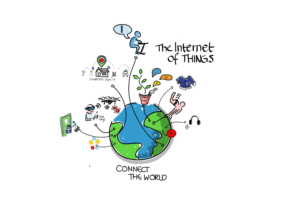The Role of Renewable Energy in Future Tech Innovations

Renewable energy is shaping the future of technological innovation, driving advancements in various fields from sustainable materials to cutting-edge devices. Imagine a world powered by the sun, wind, and water, where technology seamlessly integrates with nature and sustainability. This shift presents an exciting opportunity to address critical challenges like climate change and foster economic growth while simultaneously fostering innovation. This article delves into the critical role renewable energy plays in future tech innovations, examining the various applications, challenges, and future prospects. The structure will explore the transformative potential of renewable energy in materials science, electronics, and transportation sectors and will also analyze the impact of policy changes and technological improvements in supporting a sustainable future.
1. The Foundation of Sustainable Materials:
1.1. Renewable Energy and Sustainable Materials:
The transition to a sustainable future hinges on the development of materials that align with environmental responsibility. Renewable energy plays a pivotal role in driving this process by providing the clean energy necessary for the creation of sustainable materials. Utilizing renewable sources like solar power in manufacturing processes reduces the environmental footprint associated with conventional energy consumption. This shift towards eco-friendly production methods is becoming increasingly crucial as consumers demand environmentally conscious products. Several companies have already integrated renewable energy in their operations, setting a precedence for other industries to follow. The benefits extend beyond environmental considerations, impacting financial performance by potentially reducing costs associated with traditional energy sources. By reducing energy reliance on fossil fuels, the industry can streamline operations and become more competitive in the global market.
1.2. Examples of Green Materials:
Recycled plastics and bio-based materials derived from renewable sources like plant fibers offer viable alternatives to traditional materials. These materials are not only environmentally friendly but also offer performance properties comparable to conventional options. This is a key area where renewable energy empowers innovation, enabling the development of sustainable alternatives that are both practical and environmentally responsible. For example, the use of bio-based plastics derived from plant starch or sugarcane offers a potential solution to the growing plastic waste problem.
1.3. The Economic Impact of Sustainable Materials:
The market for sustainable materials is experiencing rapid growth, creating significant economic opportunities. Companies pioneering the use of these materials report substantial cost savings and enhanced brand reputation. This growth incentivizes further research and development in this area, accelerating the adoption of renewable energy in manufacturing processes.
1.4. Challenges in Scaling Sustainable Materials:
Despite the evident benefits, challenges remain in scaling up the production of sustainable materials. One significant obstacle is the availability of raw materials and the required infrastructure to support these new processes. However, ongoing innovations in extraction and processing methods, coupled with government support for renewable energy technologies, are steadily addressing these issues.
1.5. The Future of Sustainable Materials:
The increasing integration of renewable energy in the production of sustainable materials will continue to reshape industries worldwide. The global transition to renewable energy will drive even more innovation, resulting in more sustainable and efficient solutions.
2. Powering the Next Generation of Electronics:
2.1. Renewable Energy and Electronics:
The electronics industry is energy-intensive, often relying heavily on fossil fuels for manufacturing and operation. Renewable energy offers a compelling solution to address this issue, allowing the development of environmentally friendly production processes. The use of solar panels and wind turbines for powering factories, combined with energy-efficient designs, reduces the industry’s carbon footprint significantly. The adoption of renewable energy in the electronics sector is not just about reducing emissions; it’s about fostering innovation by driving efficiency and encouraging the development of novel energy-harvesting technologies.
2.2. Energy-Efficient Devices:
The advancements in renewable energy are fueling the development of energy-efficient electronic devices. The integration of solar cells into mobile devices and the use of advanced materials to improve energy storage are examples of this progress. The growing demand for these energy-efficient devices is prompting more investment in research and development, accelerating the pace of innovation.
2.3. Manufacturing Processes and Renewables:
Manufacturers are increasingly incorporating renewable energy sources into their operations, from powering assembly lines to providing electricity for testing equipment. These efforts reduce reliance on traditional energy sources while enhancing the sustainability of their operations. Significant cost savings and a positive brand image result from these eco-friendly practices.
2.4. Challenges in Implementing Renewable Energy in Electronics:
While the benefits are substantial, challenges remain in widespread adoption. The cost of implementing renewable energy infrastructure, integration difficulties with existing systems, and the variability of renewable energy sources are among the factors that impede progress. However, continuous improvements in storage solutions and grid infrastructure address these issues progressively.
2.5. The Future of Electronics and Renewable Energy:
The convergence of renewable energy and electronics is poised to drive a new era of innovation. Expect to see even more integrated and energy-efficient devices, leading to a more sustainable and technologically advanced future.
3. Revolutionizing Transportation with Renewable Energy:
3.1. Electric Vehicles and Renewables:
Renewable energy is the cornerstone of the growing electric vehicle (EV) industry. Charging EVs using renewable energy sources minimizes the environmental impact of transportation and encourages the development of sustainable alternatives to fossil fuels. This is evident in countries heavily investing in solar and wind farms specifically for powering EV charging stations, creating sustainable mobility solutions. Furthermore, battery technologies and charging infrastructure are advancing, enabling wider access to electric vehicles. The focus on renewable energy sources drives investment in EV infrastructure, creating a virtuous cycle of sustainable growth.
3.2. Other Sustainable Transportation Solutions:
Beyond electric vehicles, the integration of renewable energy expands to public transportation systems and even the development of alternative fuel technologies. Hybrid buses powered by solar or wind energy, as well as biofuels derived from renewable resources, are examples of sustainable transport solutions fueled by renewable energy.
3.3. Addressing the Challenges of Renewable Energy Integration in Transportation:
The use of renewable energy for transportation faces certain challenges. The fluctuating nature of renewable energy, particularly solar and wind power, necessitates innovative energy storage solutions to ensure consistent power availability. Furthermore, infrastructure and charging point development are vital for ensuring that EVs become a truly viable alternative.
3.4. Government Policies and Investment in EVs:
Government policies significantly impact the transition to sustainable transportation. Incentives for EV purchases, subsidies for charging infrastructure development, and regulations that limit fossil fuel-based vehicles contribute to promoting renewable energy in the transport sector. International cooperation and standardization in charging protocols are also crucial.
3.5. The Future of Sustainable Transportation:
The integration of renewable energy into transportation is set to revolutionize the industry, fostering a shift towards a more sustainable and environmentally friendly future. The continual development of new battery technologies and energy-efficient vehicles will only accelerate this promising trend.
4. The Impact of Renewable Energy Policies and Incentives:
4.1. Government Regulations and Renewable Energy Adoption:
Government policies play a significant role in accelerating the adoption of renewable energy technologies. Incentives, such as tax credits for renewable energy installations and stricter emission regulations, encourage businesses and individuals to invest in sustainable solutions. Many countries are implementing policies aimed at transitioning their energy grids to renewables, incentivizing investment in renewable energy sources and fostering innovation.
4.2. International Collaboration in Energy Transition:
International cooperation is crucial in accelerating the transition to renewable energy. Sharing knowledge, technologies, and best practices among nations creates a collective drive for sustainability. International agreements aimed at combating climate change often feature provisions for renewable energy adoption and technology transfer.
4.3. The Financial Incentives for Renewable Energy:
Financial incentives can stimulate private investment and public-private partnerships in renewable energy. Subsidies, grants, and tax breaks can significantly reduce the initial costs associated with transitioning to renewable energy sources. These incentives play a crucial role in driving economic growth and development by attracting private investment in renewable energy projects.
4.4. The Role of Renewable Energy in Economic Development:
The investment in renewable energy infrastructure creates jobs in manufacturing, installation, and maintenance. Furthermore, the reduction in reliance on fossil fuels enhances energy security and fosters economic stability. Developing countries often find that investing in renewable energy promotes economic development and reduces their dependence on expensive fuel imports.
4.5. Future of Policies and Incentives:
Government policies will likely become increasingly critical in the future. The development of long-term strategies, clear regulatory frameworks, and the establishment of research funds will further bolster the adoption of renewable energy technologies.
Related Post : How Biotech Is Pushing the Boundaries of Medicine and Healthcare
5. Conclusion:
5.1. The Future of Energy and Technology:
Renewable energy is integral to future technological innovations, driving advancements in diverse fields from materials science to transportation. Embracing renewable energy solutions is essential not only for environmental sustainability but also for economic growth and societal well-being.
5.2. The Call to Action:
Individuals and organizations must actively embrace the transition to renewable energy. Support for renewable energy technologies, investments in research and development, and advocacy for policies that promote sustainability are essential steps. The integration of renewable energy into existing infrastructure is essential for the smooth transition and benefits of clean energy technologies.
5.3. Future Steps and Resources:
Stay updated on the latest developments in renewable energy. Explore educational resources and initiatives focused on clean technologies. Seek out opportunities to engage in renewable energy projects and initiatives. Support businesses and organizations committed to environmental sustainability.
In conclusion, renewable energy is pivotal to future tech innovations. Its crucial role in powering advancements, from sustainable materials to next-generation devices, is undeniable. Embracing this transition isn’t just environmentally sound; it fuels economic growth and fosters innovation. By investing in research and development, supporting the adoption of clean technologies, and fostering global collaboration, we can unlock the full potential of renewable energy and shape a brighter, more sustainable future. To learn more, visit our website or contact us for a consultation.
Share this content:













Post Comment